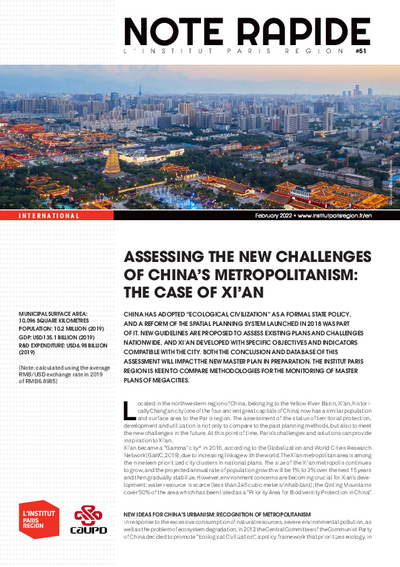Assessing the new challenges of China's metropolitanism: the case of Xi'an
Note rapide International, #51
China has adopted “ecological civilization” as a formal state policy, and a reform of the spatial planning system launched in 2018 was part of it. New guidelines are proposed to assess existing plans and challenges nationwide, and Xi'an developed with specific objectives and indicators compatible with the city. Both the conclusion and database of this assessment will impact the new master plan in preparation. The Institut Paris Region is keen to compare metholodogies for the monitoring of master plans of megacities.
This study is linked to the following themes :
International |
Urban planning
